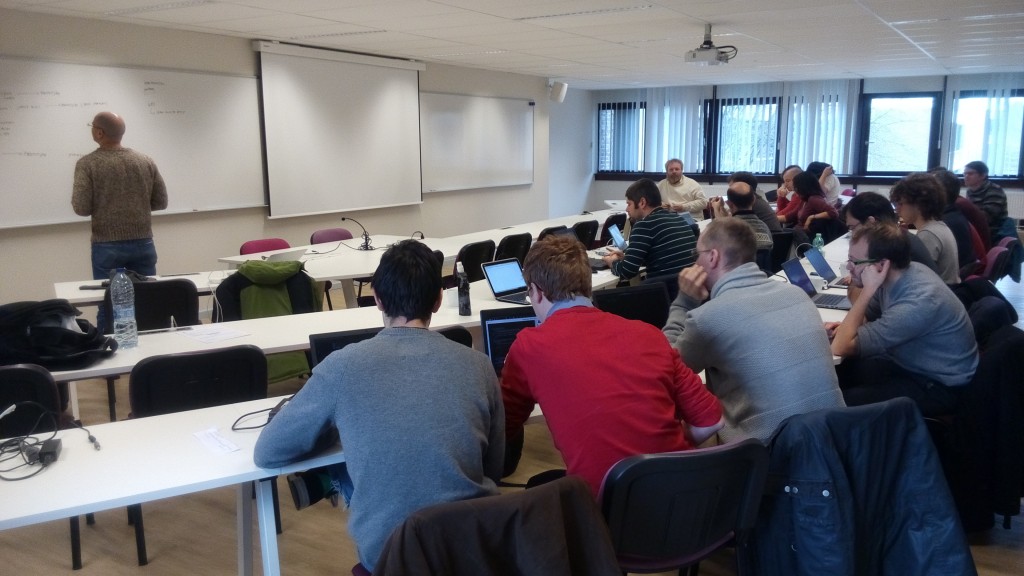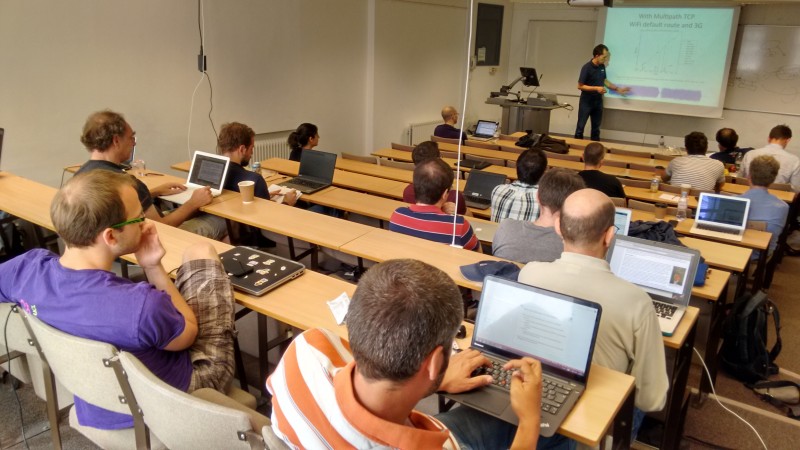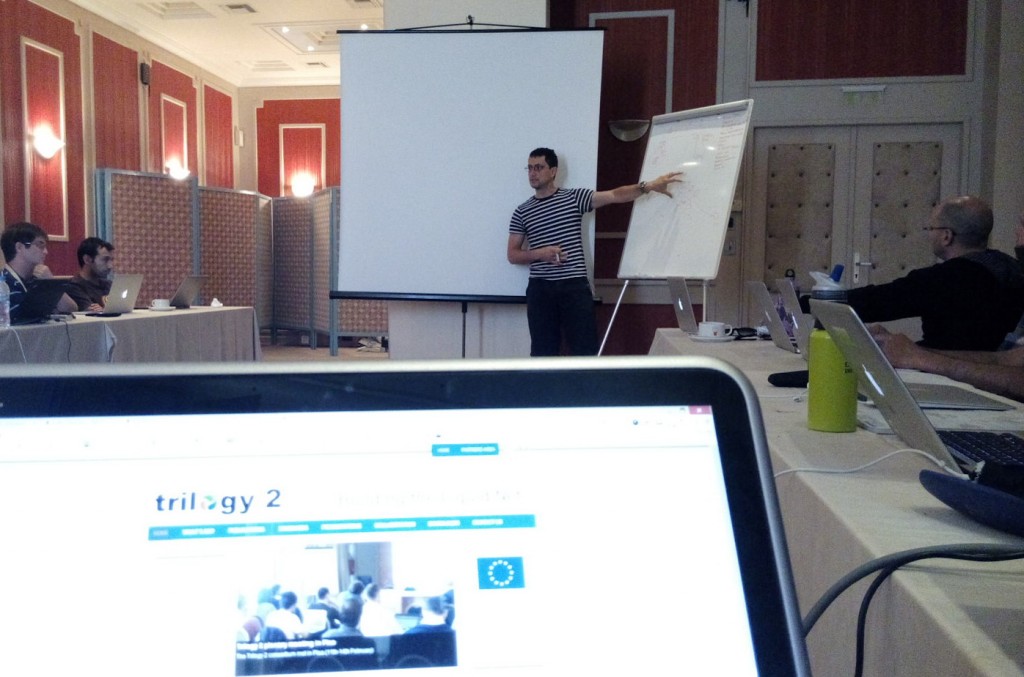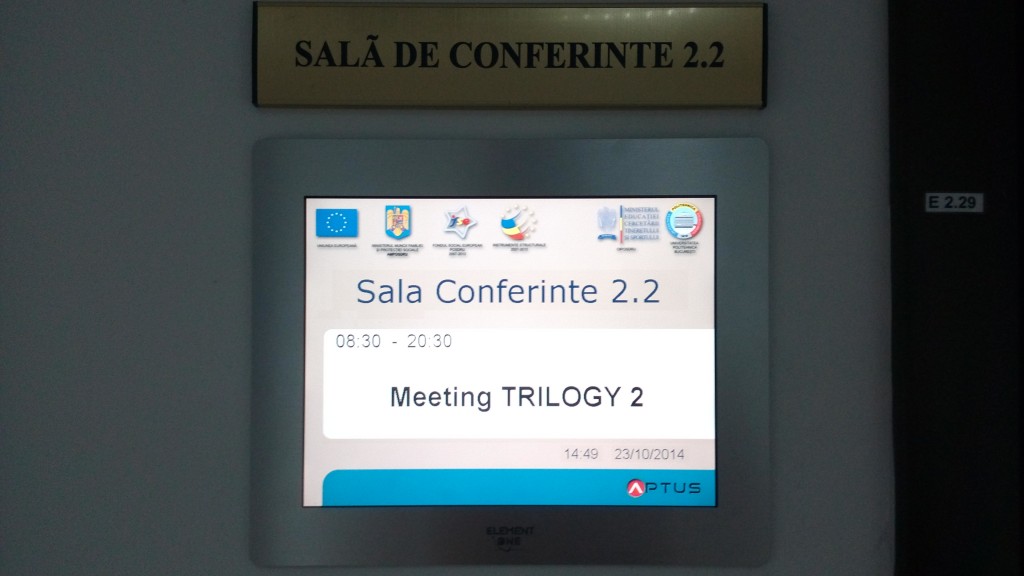Upcoming IETF Meetings. IETF 93 – Prague, Czech Republic
Different Trilogy 2 partners will be presenting their work in this meeting (July 19-24)


Trilogy 2 plenary meeting in Louvain la Neuve
The Trilogy 2 consortium met in Louvain la Neuve at the UCL (Université catholique de Louvain la Neuve) (16th-17th February)


'Trilogy 2: Building the Liquid Net' is aimed at developing a new Internet architecture based on the concept of the liquid network.
A liquid system should ideally allow resources including bandwidth, storage and processing to be used by any application, whether they are contributed by network operators, data centre operators or end systems. Resources form a shared pool and applications can scale up and down in multiple dimensions (storage, processing, bandwidth and energy usage) as needed, in a continuous effort to enhance the users’ experience as measured in terms of key metrics such as delay and battery life.
The main objective of Trilogy 2 is to unlock the value inherent in joining up the pools of liquidity in the Internet. The project will develop more mature liquidity mechanisms addressing the underlying reasons why today liquidity fails to join up across providers, layers and resources. Trilogy 2 will deliver mechanisms for creating liquidity across different types of resources, including cross-layer liquidity, cross-provider liquidity and cross-resource liquidity.
In order to allow the different stakeholders to be willing to create such liquid pools of resources, Trilogy 2 will also provide the means to control the created liquidity though the means of incentives, information exchange and enforcement tools. Finally, Trilogy 2 will use the novel liquidity mechanisms to enable a set of compelling use cases targeting mobile devices and ISP’s network infrastructure.
best paper award
Matthew P. Grosvenor, Malte Schwarzkopf, Ionel Gog, Robert N. M. Watson, Andrew W. Moore, Steven Hand, and Jon Crowcroft, University of Cambridge. Usenix NSDI 2015 Oakland, USA.






